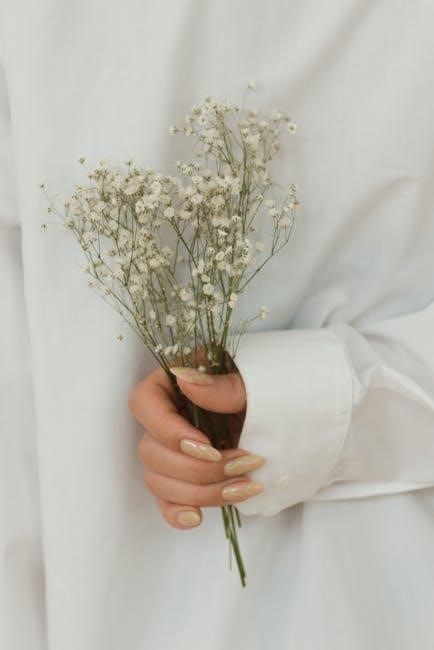Guiding Light Bouquet: An Overview
Guiding Light bouquets, reflecting ecological interconnectedness, symbolize hope and remembrance, drawing from biological studies of organism interactions and environmental influences.
These arrangements, often given on Valentine’s Day or for achievements, blend desire and dispassion, mirroring life’s complex household dynamics and past impressions.
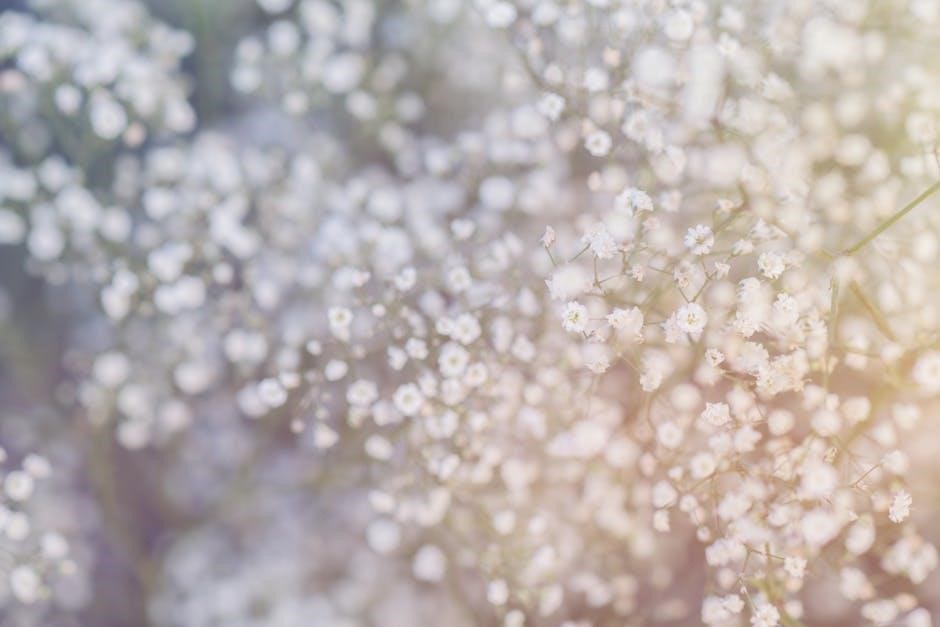
Historical Significance & Origins
The concept of a “Guiding Light” bouquet, while not possessing a rigidly defined historical origin, subtly echoes ancient traditions of offering blooms as symbols of hope and remembrance. The very term “ecology,” stemming from the Greek oikos (household) and logos (study), reflects a long-held human fascination with interconnectedness – a principle mirrored in the thoughtful arrangement of flowers.
Early botanical studies, like those pioneered by Alexander von Humboldt in the 19th century, laid groundwork for understanding organism interactions, influencing floral symbolism. The bouquet’s association with desire and dispassion, as explored in philosophical texts, suggests roots in recognizing life’s dualities.
Modern interpretations likely emerged alongside increased societal focus on expressing emotions through gifting, particularly around events like Valentine’s Day, blending personal connection with broader ecological awareness. The bouquet’s evolution reflects a growing appreciation for nature’s delicate balance.
Symbolism and Meaning
A Guiding Light bouquet carries layered symbolism, rooted in the interplay of desire and remembrance. Echoing the ecological principle of interconnectedness – where every organism influences its environment – the bouquet represents relationships and their impact. The “light” aspect signifies hope, direction, and clarity during challenging times, offering solace in sympathy or celebrating achievements.
The bouquet’s meaning is further enriched by the understanding that desire arises from past experiences, mirroring the preservation of memories. It acknowledges life’s complexities, embracing both joy and sorrow.
Giving a Guiding Light bouquet can symbolize a commitment to navigating life’s journey together, offering support and understanding, much like a beacon in darkness. It’s a gesture acknowledging the household of emotions within a relationship.
Floral Composition & Varieties
Guiding Light bouquets utilize diverse blooms, reflecting ecological variety; arrangements blend traditional choices with modern interpretations, showcasing color psychology and biological influences.
Traditional Flowers Used
Historically, Guiding Light bouquets incorporated flowers symbolizing hope, remembrance, and enduring love, mirroring the interconnectedness explored in ecological studies. Roses, particularly white and cream varieties, frequently featured, representing purity and new beginnings, aligning with themes of household harmony – the core of oikos.
Lilies, signifying sympathy and devotion, were also common, acknowledging life’s complexities and past impressions. Carnations, available in a spectrum of colors, offered versatility in expressing specific emotions. These choices weren’t arbitrary; they reflected a deep understanding of floral symbolism, akin to recognizing the interactions between organisms and their environment.
Additionally, chrysanthemums, often associated with longevity and joy, found their place, embodying the enduring nature of cherished memories. These traditional selections, rooted in cultural practices, formed the foundation of these meaningful arrangements, echoing the scientific pursuit of understanding life’s delicate balance.
Modern Interpretations & Flower Choices
Contemporary Guiding Light bouquets embrace a wider palette of blooms, moving beyond strict tradition while retaining symbolic depth. Designers now frequently incorporate lisianthus, representing gratitude and appreciation, and stock, embodying lasting bonds – reflecting the complex interactions studied in ecology.
Ranunculus, with their delicate petals, symbolize charm and attractiveness, adding a touch of whimsy. Protea, representing courage and transformation, offer a bold statement, acknowledging life’s challenges and the need for resilience. These choices acknowledge the desire for unique expression, mirroring the individual experiences shaping our perceptions.
Succulents are increasingly popular, symbolizing enduring and unconditional love, and echoing the longevity found in nature. Modern arrangements prioritize texture and form alongside color, creating visually striking displays that honor both aesthetic appeal and heartfelt sentiment, much like a balanced ecosystem.
Color Psychology in Guiding Light Bouquets
Guiding Light bouquets leverage color psychology to amplify their emotional impact. White, representing purity and reverence, is often used in sympathy arrangements, echoing the dispassion needed for remembrance. Yellow, symbolizing hope and new beginnings, brightens celebratory displays, mirroring the pleasant experiences fueling desire.
Deep reds convey passionate love and respect, suitable for anniversaries, while softer pinks express gratitude and admiration. Purple, associated with dignity and admiration, adds a touch of sophistication. The interplay of hues reflects the complex interactions within an ecosystem, where balance is key.
Green, representing growth and harmony, provides a grounding element, symbolizing life’s enduring cycle. Designers carefully consider these associations, crafting bouquets that communicate specific emotions and intentions, acknowledging the power of color to influence perception and mood.
Construction & Design Principles
Guiding Light bouquets, like ecological systems, require balanced proportions and thoughtful arrangement, reflecting organism interactions and household harmony within a defined space.

Arrangement Styles (Round, Cascade, etc.)
Guiding Light bouquets exhibit diverse arrangement styles, mirroring the varied interactions within ecological systems. Traditional round bouquets symbolize unity and completeness, representing a harmonious household, while cascade arrangements evoke flowing energy and abundance, akin to natural ecosystems.
Modern interpretations often favor asymmetrical designs, reflecting the dynamic balance found in nature – a blend of desire and dispassion. Free-form styles, reminiscent of wild landscapes, emphasize organic beauty and the interconnectedness of all elements. The choice of style impacts the bouquet’s overall message, influencing perceptions of remembrance, celebration, or heartfelt sympathy.
Considering the bouquet as a miniature environment, designers carefully select forms to create visual interest and convey intended emotions, echoing the principles of biological study and environmental awareness.
Foliage Selection & Its Role
Guiding Light bouquets benefit significantly from thoughtful foliage selection, mirroring the crucial role of environmental factors in ecological balance. Foliage isn’t merely filler; it provides structural support, enhances color contrasts, and adds textural depth, representing the ‘unbelebten Umwelt’ – the non-living environment.
Varieties like eucalyptus offer aromatic qualities and symbolic meaning, while ferns evoke lush, natural landscapes. The choice of foliage influences the bouquet’s overall aesthetic, contributing to feelings of remembrance, celebration, or heartfelt sympathy.

Carefully chosen foliage can also extend the bouquet’s lifespan, providing hydration and protecting delicate blooms, much like a healthy ecosystem supports its organisms. It’s a subtle yet vital element, reflecting the interconnectedness of all components.
The Importance of Balance & Proportion
Guiding Light bouquets, like ecological systems, thrive on balance and proportion. Achieving visual harmony requires careful consideration of flower size, shape, and color, mirroring the ‘Wechselwirkungen’ – interactions – between organisms and their environment. A disproportionate arrangement can feel chaotic, losing the intended emotional impact.
The bouquet’s height and width should complement its vase, creating a pleasing silhouette. Flower placement should guide the eye, emphasizing focal points while maintaining overall equilibrium. This echoes the scientific study of relationships within a ‘Haushalt’ – a household or system.
Proper proportion ensures the bouquet feels complete and intentional, conveying sentiments of hope, remembrance, or celebration with grace and clarity.
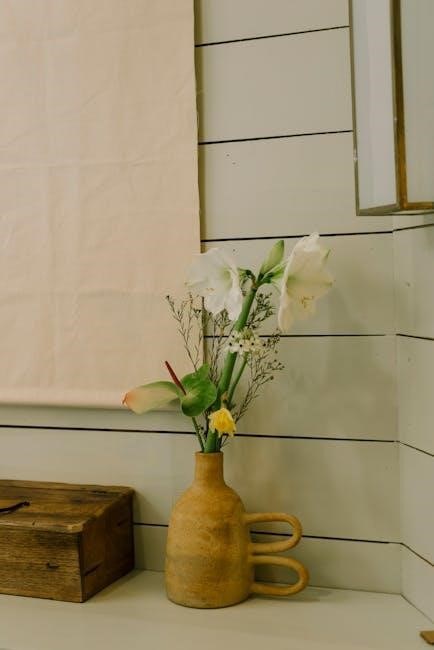
Occasions for Gifting
Guiding Light bouquets suit weddings, anniversaries, sympathy gestures, and achievements, mirroring life’s interconnectedness and evoking both desire and dispassion with heartfelt expression.
Weddings & Anniversaries
Guiding Light bouquets, symbolizing enduring love and a shared future, are exceptionally fitting for weddings and anniversaries. Reflecting the ecological principle of interconnectedness – organisms thriving within their environment – these bouquets represent the couple’s blossoming relationship and commitment to nurturing their shared ‘household’.
The bouquet’s composition, drawing from diverse floral varieties, mirrors the unique blend of personalities coming together in marriage. Just as ecological studies examine interactions between living things and their surroundings, a Guiding Light bouquet acknowledges the influence of family, friends, and life experiences on the couple’s journey.
Presenting such a bouquet signifies a wish for a harmonious and flourishing partnership, acknowledging both the passionate desire and the calm dispassion necessary for a lasting bond. It’s a beautiful, symbolic representation of a life built together, echoing the balance found in nature itself.
Sympathy & Remembrance
Guiding Light bouquets, offered during times of grief, serve as a poignant expression of sympathy and remembrance, acknowledging the delicate balance of life and loss – mirroring ecological cycles. The bouquet’s gentle arrangement can symbolize a peaceful transition, offering solace and conveying heartfelt condolences to those mourning.
Drawing parallels to the study of interactions within an ecosystem, these floral tributes recognize the lasting impact the departed had on their ‘household’ and the wider community. The flowers themselves, representing fleeting beauty, remind us of cherished memories and the enduring power of love.
Presenting a Guiding Light bouquet acknowledges the pain of separation while offering a beacon of hope, suggesting that even in darkness, light persists. It’s a respectful gesture, honoring a life lived and offering comfort during a difficult time, embracing both desire for their presence and acceptance of their absence.
Celebrations & Achievements
Guiding Light bouquets beautifully encapsulate the joy of celebrations and achievements, mirroring the flourishing of life within a balanced ecosystem. These arrangements symbolize success, recognizing the hard work and dedication that led to a positive outcome – a blossoming of effort, much like a thriving ‘household’ of organisms.
The vibrant colors and carefully selected blooms represent the energy and enthusiasm associated with milestones reached. Presenting a bouquet acknowledges not only the accomplishment itself but also the individual’s journey and the positive impact they’ve made, echoing the interconnectedness studied in ecology.
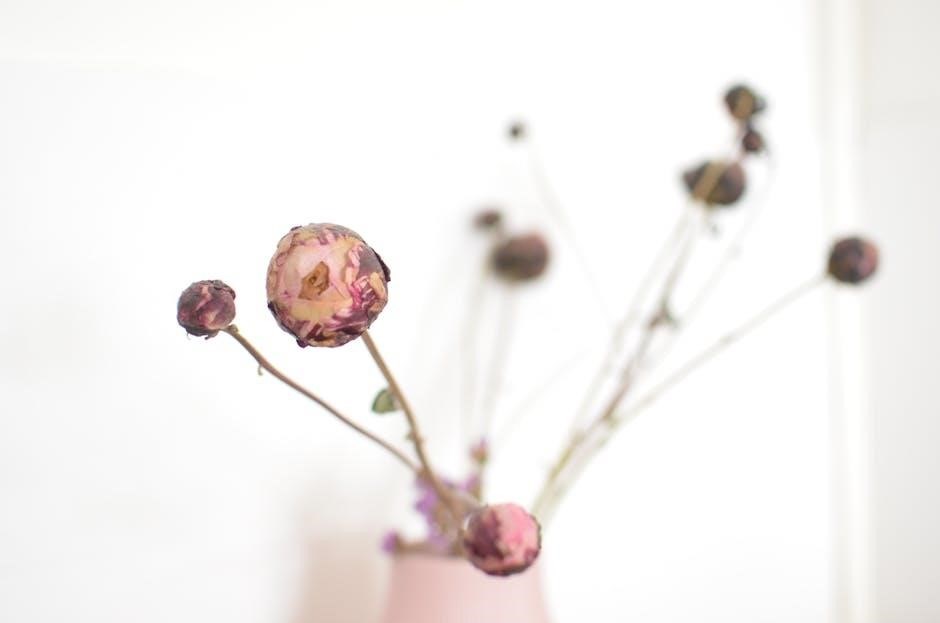
A Guiding Light bouquet is a visual representation of hope and future potential, a reminder that continued growth and success are possible. It’s a gesture that celebrates desire fulfilled and inspires continued striving, acknowledging the beauty found in both the process and the result.

Care & Maintenance
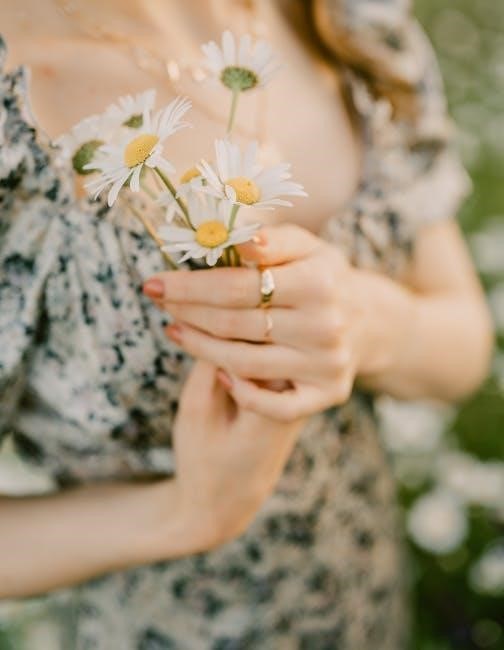
Guiding Light bouquets, like ecosystems, require hydration and attention; regular watering extends lifespan, addressing issues promptly ensures continued vibrancy and balanced beauty.
Watering & Hydration Techniques
Guiding Light bouquets, mirroring the ecological need for balanced environments, thrive with consistent hydration. Begin by using a clean vase and filling it with fresh, cool water – ideally treated with floral preservative, which provides essential nutrients and inhibits bacterial growth, much like a healthy ecosystem supports life.
Recut stems at a 45-degree angle before placing them in water; this maximizes water absorption, similar to how roots absorb moisture from the soil. Change the water every one to two days, re-cutting the stems each time to prevent blockage and maintain optimal hydration. Avoid overcrowding the vase, allowing sufficient space for water circulation. Consider misting the blooms lightly with water to increase humidity, especially in drier climates, mimicking the natural dew found in flourishing environments. Observe the flowers daily, looking for signs of wilting, and adjust watering accordingly, understanding that, like all living things, their needs will evolve.
Extending Bouquet Lifespan
Guiding Light bouquets, like delicate ecosystems, benefit from mindful care to prolong their beauty. Beyond regular watering and stem recutting, strategic placement is key – avoid direct sunlight, heat sources, and drafts, which accelerate wilting, mirroring how sensitive organisms respond to environmental changes.
Remove any foliage below the waterline to prevent bacterial growth, maintaining a clean ‘household’ for the blooms. Consider adding a small amount of sugar to the water, providing extra nourishment, akin to a plant receiving vital nutrients. Refrigerating the bouquet overnight can significantly slow down the aging process, offering a period of dormancy. Finally, as individual blooms fade, promptly remove them to prevent ethylene gas production, which hastens the decline of surrounding flowers, ensuring the bouquet’s overall health and longevity, much like ecological balance.

Recognizing & Addressing Common Issues
Guiding Light bouquets, though beautiful, can encounter challenges. Wilting often signals dehydration; rehydrate by recutting stems at an angle and placing them in fresh, cool water, mirroring an organism’s response to a dry environment. Browned leaves indicate bacterial contamination – change the water immediately and remove affected foliage, restoring a healthy ‘household’.
Drooping heads may stem from ethylene gas exposure; isolate the bouquet from ripening fruits. If petals appear translucent or develop dark spots, fungal issues may be present; remove affected blooms to prevent spread. Addressing these promptly, like understanding ecological interactions, is crucial. Remember, just as in nature, early intervention is key to restoring balance and extending the bouquet’s lifespan, ensuring its guiding light continues to shine brightly.
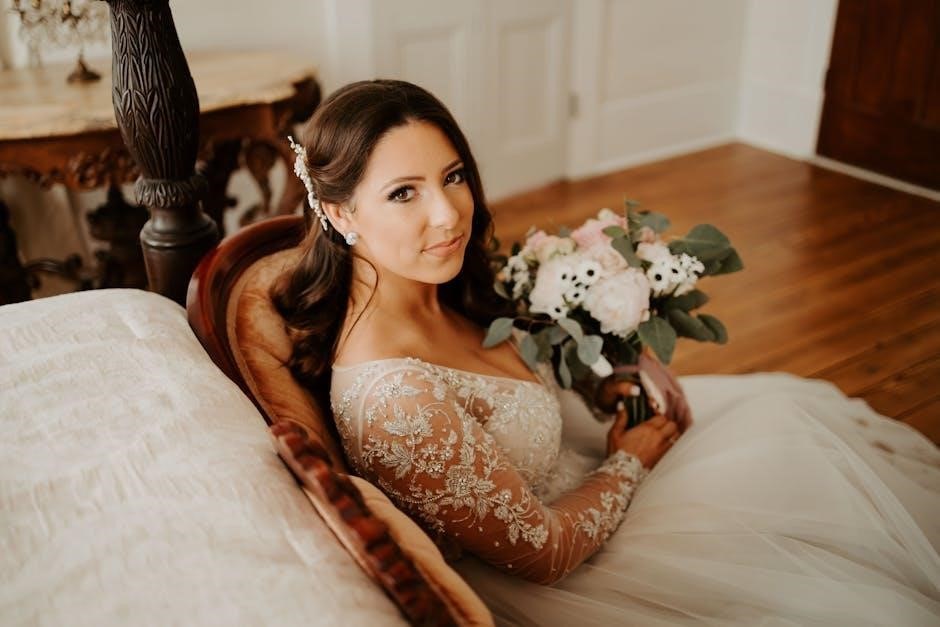
Cultural Variations & Regional Differences
Guiding Light bouquets adapt globally, reflecting diverse traditions – European formality, North American practices, and Asian influences – mirroring ecological adaptation and household values.
European Traditions
Guiding Light bouquets in Europe often embody a sense of refined elegance and historical significance, mirroring the continent’s long-standing floral traditions. Rooted in the study of oikos – the household – these arrangements frequently symbolize domestic harmony and familial bonds, echoing the ecological concept of interconnectedness.
Historically, specific flower choices within these bouquets carried coded meanings, reflecting societal norms and romantic gestures. The emphasis on balance and proportion, akin to understanding complex biological systems, is paramount. European florists often prioritize locally sourced foliage, demonstrating a respect for the environment and regional biodiversity, much like ecological studies of specific habitats.
Valentine’s Day celebrations, while present, are often more subdued than in North America, with bouquets serving as thoughtful expressions of affection rather than grand displays. The bouquets themselves often reflect a desire for lasting connection, mirroring the enduring nature of ecological relationships.
North American Practices
Guiding Light bouquets in North America tend towards bolder expressions and larger arrangements, often reflecting a culture of abundance and celebratory gestures. The emphasis on vibrant colors and diverse flower varieties showcases a desire for impactful displays, though still rooted in symbolism. Like the study of ecology, these bouquets represent complex interactions – of color, texture, and scent.
Valentine’s Day significantly influences bouquet trends, driving demand for red roses and elaborate designs. However, guiding light bouquets are also frequently gifted for achievements and milestones, symbolizing encouragement and support. The practice of adding personalized touches, like specific foliage or meaningful charms, is common, mirroring the unique aspects of individual ecosystems.
Accessibility to a wide range of imported flowers allows for greater creative freedom, though a growing awareness of sustainable practices is influencing choices.
Asian Influences
Guiding Light bouquets in Asian cultures often prioritize symbolism and minimalist elegance, drawing heavily from traditions of floral arrangement like Ikebana. Unlike bolder North American styles, arrangements emphasize balance, harmony, and the inherent beauty of individual blooms, reflecting ecological principles of interconnectedness. The bouquets frequently incorporate branches and unconventional materials alongside flowers, representing growth and resilience.
Color psychology plays a crucial role, with specific hues carrying profound meanings – white for purity, red for prosperity, and yellow for courage. These bouquets aren’t merely decorative; they’re considered thoughtful expressions of respect, gratitude, or remembrance, akin to understanding the ‘household’ of nature.
A focus on seasonal flowers and locally sourced materials is prevalent, mirroring a deep respect for the environment.
